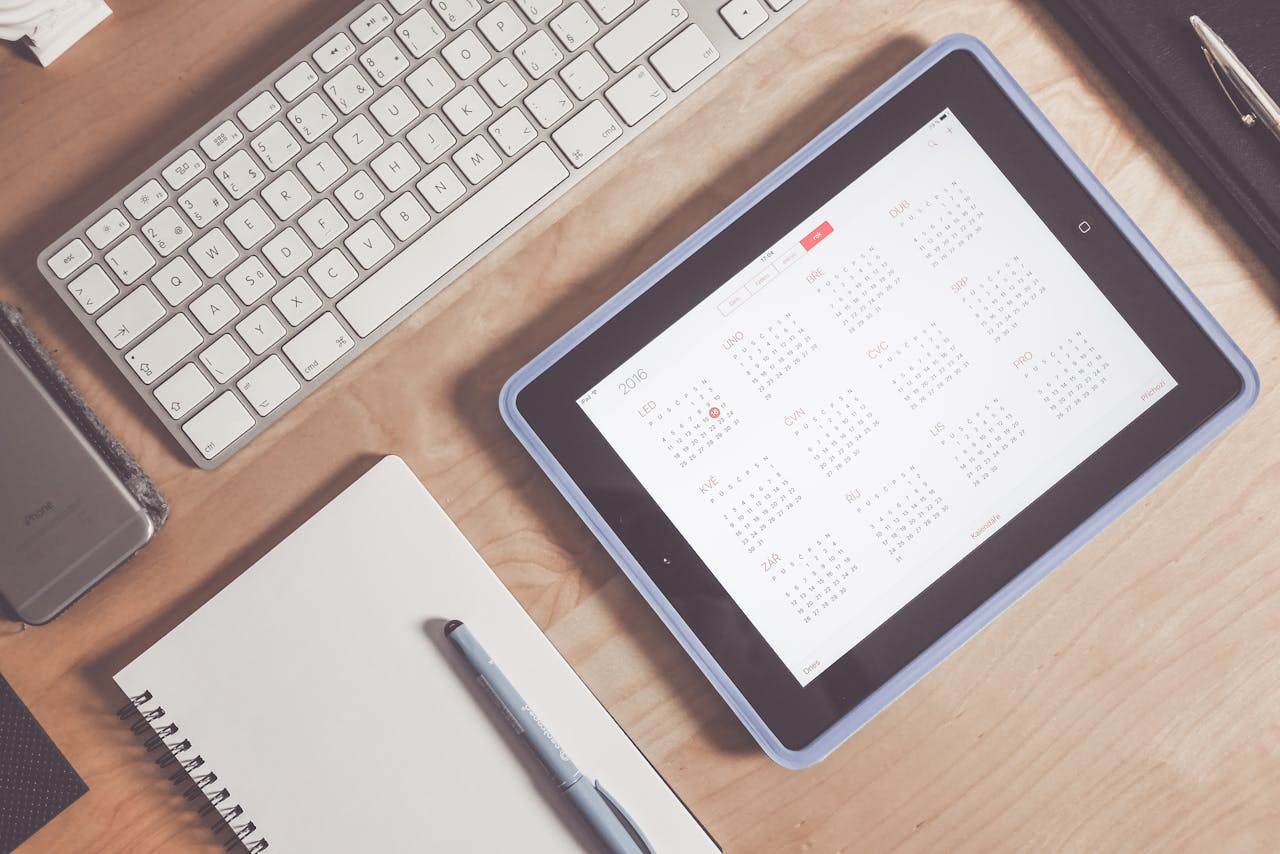
On a busy Saturday, a small independent hotel lives by the rhythm of its calendar. One late cancellation opens a coveted room; a last-minute booking closes a gap; a housekeeping “ready” tap flips a space from offline to sellable. When those signals flow cleanly, the day feels effortless. When they don’t, double bookings, price mismatches, and long check-ins creep in. The good news: modern PMS for small hotels can turn that fragile dance into a dependable system—one calendar at the center, smarter rates at the edges, and real-time updates across every channel where you sell.
Think of this piece as a practical PMS setup overview for small independent hotels, not a technical whitepaper focused on the outcomes owners actually care about: fewer errors, faster turns, and more revenue from the same rooms. We’ll cover how a unified calendar prevents double sales, why “pooled inventory” and a channel manager matter, how dynamic pricing lifts RevPAR without guesswork, and what a simple, low-stress rollout looks like for lean teams.
One calendar, everywhere your guests shop
A hotel’s calendar is the source of truth for “what’s bookable.” The trick is to make one calendar feed for every marketplace—your website, your booking engine, and the OTAs—so a room sells exactly once. This is where channel management and a pooled inventory model pay off. With pooled inventory, you maintain a single count per room type and broadcast changes instantly to all channels; there are no static allotments to reconcile and far fewer chances for double bookings. Reputable guides emphasize that strong channel managers combine two-way PMS connectivity with real-time inventory and rate updates to prevent overbooking and maintain tight parity.
What to look for (and test):
- Two-way PMS ↔ channel manager sync ensures that new bookings, cancellations, and modifications are reflected everywhere within seconds.
- Unified inventory/pooled model (not fragmented allotments) to stop the “sold twice” problem at the source.
- Reliable mapping of room types and rate plans to prevent discrepancies, such as “Garden King” becoming “Standard King” on one site, which could confuse shoppers.
When your calendar is the single brain and your channels are the limbs, every motion is coordinated. Staff stop babysitting extranets, and guests stop encountering “sorry, we’re full” after they’ve already paid.
Smarter rates that move with demand
Selling once is only half the story; selling at the right price is the rest. Dynamic pricing updates rates based on demand, lead time, seasonality, local events, and your remaining inventory, sometimes several times a day. It’s not just for big brands; small independents see outsized gains because modest lifts in compressed periods and modest drops midweek compound into healthier RevPAR. Clear industry primers define dynamic pricing as frequent, data-driven price changes that align to real-time market conditions and booking patterns.
Practical ways a small hotel can apply it:
- Lead-time ladders: Raise rates as arrival nears when pace is strong; nudge down when softer.
- Length-of-stay (LOS) rules: Protect high-demand weekends with two-night minimums while keeping shoulder nights attractive.
- Derived rates: Tie packages (breakfast, late checkout) to BAR so when BAR moves, everything moves—no hand edits.
- Event spikes: React to concerts, sports, and conferences with pre-set guardrails that push prices up without guesswork.
With dynamic pricing integrated into your single calendar, you capture demand in real-time—on your site and across every OTA—instead of waiting for yesterday’s rate to expire while today’s shoppers browse elsewhere.
Real-time matters: why seconds beat spreadsheets
If your systems sync “every 15–30 minutes,” you’re already behind on a busy afternoon. The modern pattern is event-driven: when something changes in the PMS (a reservation, a folio, a room status), connected tools hear about it immediately via webhooks and APIs and act accordingly. That’s how a cancellation frees inventory everywhere at once, or a “room ready” signal triggers an arrival text and flips availability. Guides on PMS integrations and open API strategies make the case for this low-latency architecture in hospitality.
Translate that to your operation:
- Fewer parity gaps (your website is cheaper/more expensive than an OTA by mistake).
- Fewer oversells (two channels captured the “last room” during a lag).
- Faster housekeeping turns (status changes hit arrivals in seconds).
The silent hero: housekeeping linked to availability
A small property’s success hinges on housekeeping sync. When the PMS and housekeeping app talk instantly, checkout → clean → inspected becomes a clean domino run—and your calendar updates itself. Industry pieces underline that instant vacancy alerts and clear coordination tools lift guest satisfaction and ADR because ready rooms sell sooner and queues shrink.
Two rules keep it simple:
- Tasks from the calendar, not memory: the PMS creates cleans and inspections automatically based on arrivals/departures.
- “Inspected” flips rooms sellable: a finished task should change status everywhere without a phone call.
A no-drama rollout for lean teams
You don’t need a giant project plan to get from “many calendars” to “one calendar + smarter rates.” You need four weeks of focused effort and a short checklist.
Week 1 — Pick the master & clean the map
- Choose which system is your single source of truth (usually the PMS calendar).
- Align room names and rate plans so mapping is one-to-one across channels.
Week 2 — Connect channels & verify.
- Turn on two-way PMS ↔ channel manager sync and push a test repricing: does every endpoint show the change within minutes?
- Make and cancel a dummy booking on an OTA: Does inventory reopen everywhere else?
Week 3 — Wire dynamic pricing with guardrails
- Set min/max price bands and a few rules (lead-time, occupancy triggers).
- Use derived rates for packages so changes cascade automatically.
Week 4 — Link housekeeping & go live.
- Ensure “checkout” creates a clean task; “inspected” flips availability.
- Schedule a soft go-live midweek and then monitor the weekend through spot checks.
What good looks like (KPIs a small hotel can track)
Keep the scorecard concise, visible, and tied to outcomes that guests can actually feel.
- Update latency: time from rate change in PMS to live across booking engine + top OTAs (target: minutes).
- Parity incidents: price/LOS mismatches per 1,000 channel checks (target: near zero).
- Double-booking rate: oversells per 10,000 room nights (target: zero).
- Housekeeping turn time: checkout to “inspected” median (drops as automation clicks).
- RevPAR/ADR on compressed nights: compare pre- and post-dynamic pricing periods.
Common traps (and easy fixes)
- Fragmented allotments: Static blocks for each channel result in stranded inventory and overselling. Move to pooled inventory.
- Slow polling: “Every 15 minutes” feels fast until the last room sells twice. Insist on event-driven sync.
- Brittle mappings: Inconsistent room/rate names create ghost products. Standardise names and photos, then lock the map.
- Hand-edited packages: If breakfast and late checkout don’t derive from BAR, they will drift—use derived rates.
- Housekeeping on WhatsApp: Friendly, but fragile. Put tasks in the system; let status drive availability.
A traveler’s take: why this matters on a travel blog
Travelers don’t care about APIs; they care about certainty. A one-calendar hotel rarely calls to say, “We need to move you.” A dynamic-pricing hotel has fair prices that match the moment, not a random screenshot. A synchronized housekeeping schedule means fewer waits for keys and more “wow, the room’s ready early.” Behind those small delights are simple mechanics: a PMS that runs the show, a channel manager that sells from one pool, and rates that respond to reality. When a property nails those fundamentals, reviews reflect it—lines shrink, mistakes fade, and the stay feels as smooth as the pictures promised.
The bottom line: sell once, price right, keep promises
For PMS for small hotels, the path to calmer shifts and more substantial revenue runs straight through one calendar and smarter rates. Make the PMS the single source of truth; connect channels that update in seconds; let dynamic pricing do the heavy lifting within guardrails; and tie housekeeping to availability so ready rooms become revenue immediately. Industry guidance from what a PMS does, to how channel managers prevent double bookings, to why dynamic pricing wins converges on the same principle: clarity beats complexity, and speed beats spreadsheets.
Do that, and your Saturday stops holding its breath. Rooms sell exactly once. Prices make sense. Keys are ready when guests arrive. And your small hotel starts feeling bigger where it counts—in trust, reviews, and the numbers you take to the bank.



